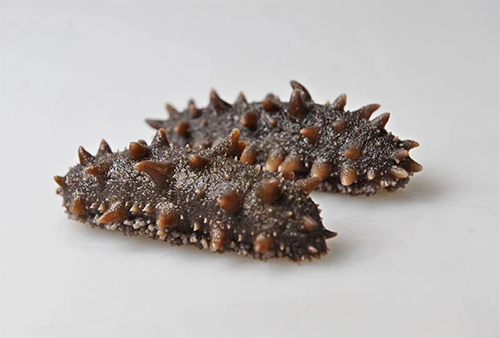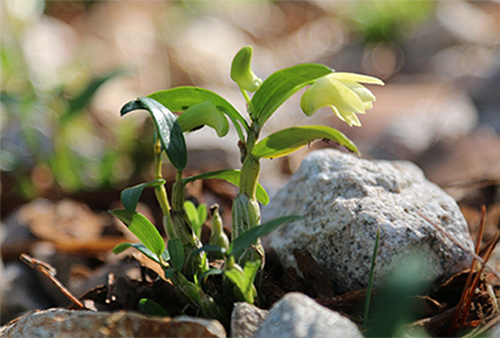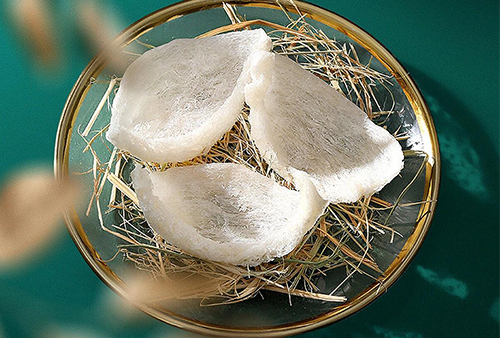YRB 4P standard for bird's nest products
The intention behind Yirenbu Biotechnology drafting the "Bird's Nest Product Grade Standard" is to regulate the development of the bird's nest industry, improve product quality, and protect consumer rights. With the rapid growth of the bird's nest market, there are significant discrepancies in quality within the industry, leading to a pressing need to enhance consumer trust in bird's nest products. By establishing this standard, Yirenbu Biotechnology aims to clarify the origins and processing requirements of bird's nests, ensuring that each batch is traceable in quality. This initiative will promote the industry towards standardization and transparency, enhancing brand image while providing consumers with safer, higher-quality choices, ultimately fostering the healthy and sustainable development of the bird's nest industry.
1. P (Place) Origin
Standards
Bird's nests should come from specific high-quality regions to ensure that the ecological environment and climate conditions are suitable for the growth of swallows.
Premium Production Areas
-
Region: Borneo Island (Indonesia)
-
Geographical Environment: Known as the "lungs of the Earth," Borneo has one of the oldest tropical rainforests with rich ecological diversity. The area features high forest coverage and developed waterways, providing abundant natural habitats.
-
Climate Conditions: Warm and humid climate with ample rainfall, ideal for the growth and nesting of the golden-collared swallow.
-
Nest Quality: The nests produced are white, thick, and of the highest quality due to the pure environment and rich nutritional sources.
First-Class Production Areas
-
Region: Malaysia (Sabah, Sarawak)
-
Geographical Environment: Rich tropical rainforests and a good ecological environment suitable for swallows. The management of swallow houses in these areas is relatively mature, ensuring stable nest production.
-
Climate Conditions: Warm and humid climate with moderate rainfall, suitable for swallow growth.
-
Nest Quality: High-quality nests, generally considered a premium source in the market, suitable for long-term consumption.
Quality Production Areas
-
Region: Thailand, Vietnam
-
Geographical Environment: These countries have suitable ecological conditions for swallow growth but may be slightly inferior to premium and first-class areas in certain environmental indicators.
-
Climate Conditions: Good climate conditions with moderate rainfall, supporting swallow nesting.
-
Nest Quality: While slightly lower in quality than premium and first-class areas, they still provide good bird's nest products suitable for mass consumption.
Regional Production Areas
-
Region: Other countries and regions (e.g., Philippines, Cambodia)
-
Geographical Environment: Relatively average environmental conditions, with ecosystems that may be fragile and prone to pollution or human interference.
-
Climate Conditions: Unstable climate with significant fluctuations in rainfall and temperature, possibly unsuitable for swallow growth.
-
Nest Quality: The nests produced are generally of lower quality, with weaker market competitiveness, requiring consumer caution in selection.
Influencing Factors
The classification of bird's nest production areas is based on seven indicators:
-
Climate: Warm and humid climates are beneficial for swallow growth.
-
Temperature: Suitable temperature ranges promote nest formation.
-
Rainfall: Sufficient rainfall provides a good habitat for swallows.
-
Water Systems: Clean water sources are crucial for swallow health.
-
Forest Coverage: Rich forest environments provide good nesting conditions.
-
Topography: Suitable terrain aids in swallow habitation and nesting.
-
Originality: Areas with minimal human interference and pollution are more suitable for swallow growth.
2. P (Process) Processing Standards
Cleaning Process Evaluation Criteria
-
Soaking: Soak the nests in purified water for 15 minutes to soften and remove surface impurities.
-
Rinsing: Rinse with flowing purified water for 5 minutes to remove dirt and foreign materials.
-
Manual Selection: Use tweezers to manually remove feathers and large impurities without damaging the nest fibers.
-
Ultrasonic Cleaning: Employ ultrasonic cleaning equipment for five cycles to further eliminate small impurities and bacteria.
Evaluation Criteria
-
Cleaning Effect: The nests should be odorless and visually clean, with a removal rate of impurities and feathers reaching over 95%.
-
Time Control: Each step's timing should be strictly controlled to ensure effective cleaning.
-
Water Quality: Only purified water should be used during cleaning to avoid contaminants.
Drying Process Evaluation Criteria
-
Low-Temperature Drying Technology: Use vacuum drying boxes or low-temperature air-drying equipment to avoid high temperatures that can damage nutritional components.
-
Drying Time: Adjust drying time based on the thickness and moisture of the nests to ensure even drying.
Evaluation Criteria
-
Moisture Content: The moisture content of dried nests should be controlled below 10% to prevent mold during storage.
-
Appearance Changes: Dried nests should maintain their original shape and have a natural white or light yellow color without significant discoloration or cracking.
Packaging Process Evaluation Criteria
-
Food-Grade Materials: Use packaging materials that meet food safety standards, such as food-grade plastic bags or boxes.
-
Sealing: Packaging should have good sealing properties to prevent air and moisture ingress.
Evaluation Criteria
-
Clear Labeling: Packaging should clearly indicate product name, origin, production date, and expiration date.
-
No Contamination: The packaging process should avoid any contamination to ensure the safety of the nests during transport and storage.
Testing Process Evaluation Criteria
-
Quality Testing: Each batch of nests should be tested for heavy metals, bacteria, and pesticide residues.
-
Testing Institutions: Testing should be conducted by qualified third-party institutions to ensure impartial results.
Evaluation Criteria
-
Pass Rate: The pass rate for each batch of nests should reach over 95%, with heavy metal and bacteria levels below national standard limits.
-
Test Reports: Each product batch should include a test report that consumers can reference to ensure product safety.
3. P (Product) Product Quality Standards
Appearance Standards
-
Color: Nests should be white or light yellow, with uniform color and no obvious color differences.
-
Shape: Nests should maintain their complete shape, with natural edges and no significant damage or gaps.
-
Impurities: The surface of the nests should be free of impurities like feathers or weeds.
Thickness Standards
-
Thickness: High-quality nests are typically thicker and resilient, not easily broken after drying.
-
Toughness: Nests should retain a certain toughness after drying and not easily crumble.
Nutritional Component Standards
-
Protein Content: Nests should be rich in protein and amino acids, with high-quality nests having protein content above 50%.
-
Additives: Nests should contain no artificial additives, preservatives, or other chemicals.
Taste Standards
-
Cooking Texture: High-quality nests should have a smooth texture and no off-flavors after cooking.
-
Aroma: Nests should emit a faint natural aroma rather than a strong chemical smell.
4. P (Proof) Certification Standards
Standards
Bird's nests should have relevant quality certifications and testing reports to ensure their source and safety.
-
Traceability System: Each product should have complete traceability information for consumers to track the origin and processing of the nests.
-
Testing Reports: High-quality nests should include testing reports from authoritative institutions to ensure they are free from heavy metals and bacterial contamination.
-
Industry Certification: Comply with national or industry-related standards, such as the "Bird's Nest Products" industry standard, to ensure product quality.
-
Consumer Feedback: Collect and analyze consumer feedback and evaluations for continuous product quality improvement. The evaluation formula is: Good Review Rate / Sales Volume.
This standard has been established by Hangzhou Yirenbu Biotechnology Co., Ltd.



